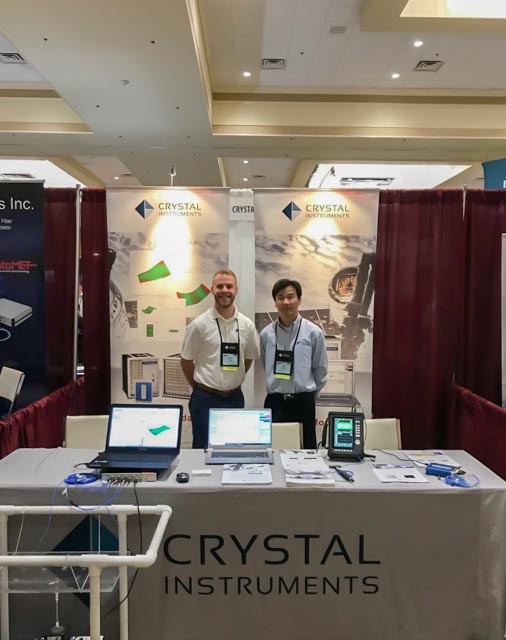IMAC 2018
Oh my! We now have both EMA and OMA!
Crystal Instruments is routinely a proud supporter of IMAC and 2018 proved to be no different. IMAC XXXVI had a broader focus in topics with the tagline being “It’s not just modal anymore.” The conference took on a note of more general-purpose data acquisition while still maintaining a strong academic focus on the modal analysis principles. The 2018 conference saw more topics including shock, and non-linear mechanics.
On debut for Crystal Instruments this year was our stepped sine modal capabilities in Single-Input Multi-output as well as our Operational Modal Analysis (OMA) capabilities.
While Crystal Instrument’s original focus was on Experimental Modal Analysis (EMA), we have recently added OMA to our repertoire. The distinguishing difference in these modal methods is whether the user has a known input into the system or whether this input to the system is governed by the ambient forces.
EMA is largely practiced on parts both small and large. This experimental technique is used to help characterize structures and to validate FEA models. This approach is used by many different markets: automotive, aerospace, defense, and education. OMA is a procedure that is done typically on large scale items—think bridges and dams. While smaller items (tables, buses and airplanes) are small enough to induce vibration into the system with either a hammer or a shaker, larger items like bridges and dams are far too large to be excited by one known input. The work-around is to use the natural forces acting on the structure (traffic or wind perhaps) and use that excitation to characterize the object under test.
Operational modal testing is designed to measure and process ambient vibration response data, which will be ready for parameter identification. The resulting cross power spectrum vector(s) can be further smoothed by using the de-convolution method.
The modal analysis process is seamlessly integrated with Operational Modal testing.
Features:
Ease of use testing process
Point/direction auto/manual increment
User defined reference channel
Scope tab to view channel data before measurement
Expanded cross power spectrum for all input channel vs. reference channel
Cross power spectrum vector(S) smoothing, multiple times or cancel
For more information on modal analysis testing or to learn more about Crystal Instruments full product suite, please reach out to info@go-ci.com.

